
Yiddish theatre consists of plays written and performed primarily by Jews in Yiddish, the language of the Central European Ashkenazi Jewish community. The range of Yiddish theatre is broad: operetta, musical comedy, and satiric or nostalgic revues; melodrama; naturalist drama; expressionist and modernist plays. At its height, its geographical scope was comparably broad: from the late 19th century until just before World War II, professional Yiddish theatre could be found throughout the heavily Jewish areas of Eastern and East Central Europe, but also in Berlin, London, Paris, Buenos Aires and New York City.
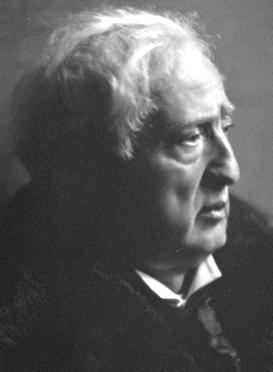
Jacob Pavlovich Adler was a Jewish actor and star of Yiddish theater, first in Odessa, and later in London and in New York City's Yiddish Theater District.
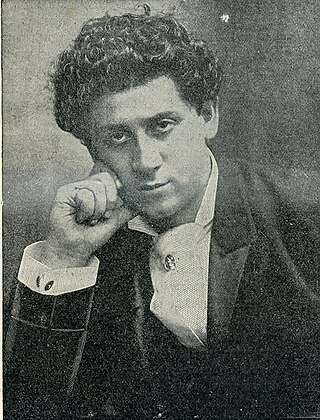
Boris Thomashefsky, born Boruch-Aharon Thomashefsky, was a Ukrainian-born Jewish singer and actor who became one of the biggest stars in Yiddish theater.
Moishe Finkel was a prominent figure in the early years of Yiddish theater. He was business partner first of Abraham Goldfaden and later of Sigmund Mogulesko and, for a time, was married to prima donna Annetta Schwartz. Together, they dominated Yiddish theatre in Bucharest in the early 1880s and in New York City in the late 1880s and into the 1890s, with a repertoire based mainly in the works of Joseph Lateiner and Moses Horowitz.

Celia Feinman Adler was an American actress, known as the "First Lady of the Yiddish Theatre".

David Kessler (1860–1920) was a prominent actor in the first great era of Yiddish theater. As a star Yiddish dramatic performer in New York City, he was the first leading man in Yiddish theater to dispense with incidental music.

Bessie Thomashefsky, born Briche Baumfeld-Kaufman, was a Russian-born Jewish American singer, actress and comedian, a star in Yiddish theater beginning in the 1890s. She was the wife and stage partner of Boris Thomashefsky, the most popular Yiddish leading man of his era. Probably her most famous role was the title role of Oscar Wilde's Salomé at the People’s Theater in 1908.
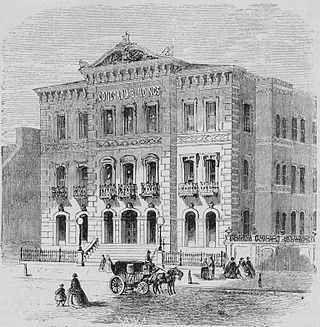
Concordia Hall was a music venue in Baltimore, Maryland. It was founded in 1866 by Germans from the largest immigrant community in that city. It was the location for readings by Charles Dickens in 1868, during his second visit to America., and other visiting lecturers and musical groups, and the site of civic events. Concordia Hall was located on Eutaw Street, south of German Street.
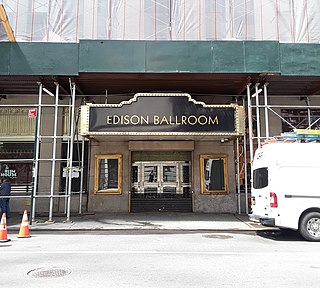
The Edison Theatre was a Broadway theatre in the Hotel Edison at 240 West 47th Street in Midtown Manhattan, New York City. Opened in 1931 as the hotel's ballroom, it became the Arena Theatre on May 31, 1950, with a revival of George Kelly's The Show Off. The following year it was returned to the hotel's ballroom and remained as such until the early 1970s, when it was re-converted to a theatre. Its most notable production was Oh! Calcutta!, which opened on September 24, 1976, and ran for 13 years, with a total of 5,959 performances. Other shows staged here included Don't Bother Me, I Can't Cope, Me and Bessie, Sizwe Banzi is Dead, The Island, and Love Letters.
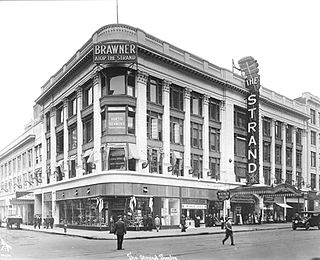
The Strand Theatre was an early movie palace located at 1579 Broadway, at the northwest corner of 47th Street and Broadway in Times Square, New York City. Opened in 1914, the theater was later known as the Mark Strand Theatre, the Warner Theatre, and the Cinerama Theatre. It closed as the RKO Warner Twin Theatre, and was demolished in 1987.
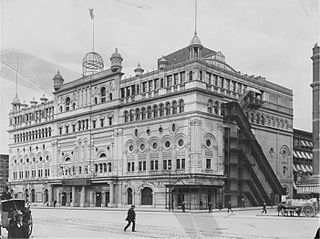
The Olympia Theatre, also known as Hammerstein's Olympia and later the Lyric Theatre and the New York Theatre, was a theatre complex built by impresario Oscar Hammerstein I in Longacre Square, New York City, opening in 1895.

Mount Hebron is a Jewish cemetery located in Flushing, Queens, New York, United States. It was founded in 1903 as the Jewish section of Cedar Grove Cemetery, and occupies the vast majority of the grounds at Cedar Grove. The cemetery is on the former Spring Hill estate of colonial governor Cadwallader Colden. Mount Hebron is arranged in blocks, which are then split up into sections or society grounds. Sections were originally sold mainly to families or Jewish community groups such as landsmanshaftn, mutual aid societies, and burial societies. For instance, Mount Hebron is known for having a section reserved for people who worked in New York City's Yiddish theater industry. While this type of organization is common for American Jewish cemeteries, Mount Hebron has an especially diverse range of society grounds. About 226,000 people have been buried in Mount Hebron since it opened.

Pike's Opera House, later renamed the Grand Opera House, was a theater in New York City on the northwest corner of 8th Avenue and 23rd Street, in the Chelsea neighborhood of Manhattan. It was constructed in 1868, at a cost of a million dollars, for distiller and entrepreneur Samuel N. Pike (1822–1872) of Cincinnati. The building survived in altered form until 1960 as an RKO movie theater, after which it was replaced by part of Penn South, an urban renewal housing development.
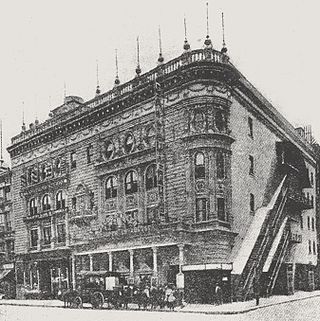
The Grand Theatre was a theatre in the Yiddish Theatre District in Manhattan in New York City built for Yiddish productions, the first of its kind. The theater was built in 1904 by Jacob Pavlovitch Adler, a famous Russian-born Jewish actor.
Tremont Theatre was a theater constructed in about 1910 with seating for 942. It was located on Webster Avenue and East 178th Street, beside a New York Telephone Company building. One of the earliest purpose-built cinemas, it was known by various names during its use including Tremont Yiddish Theatre, Cinema Tremont, Moss's Tremont Avenue and the Hamilton Theater. It was located on East Tremont Avenue. The theater closed around 1960.
Pauline Edelstein was a Yiddish theatre actress.
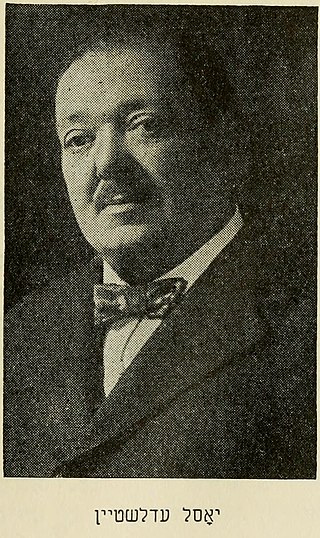
Joseph Edelstein was an actor in Yiddish Theatre in America.

The Yiddish Theatre District, also called the Jewish Rialto and the Yiddish Realto, was the center of New York City's Yiddish theatre scene in the early 20th century. It was located primarily on Second Avenue, though it extended to Avenue B, between Houston Street and East 14th Street in the East Village in Manhattan. The District hosted performances in Yiddish of Jewish, Shakespearean, classic, and original plays, comedies, operettas, and dramas, as well as vaudeville, burlesque, and musical shows.

Village East by Angelika is a movie theater at 189 Second Avenue, on the corner with 12th Street, in the East Village of Manhattan in New York City. Part of the former Yiddish Theatre District, the theater was designed in the Moorish Revival style by Harrison Wiseman and built from 1925 to 1926 by Louis Jaffe. In addition to Yiddish theatre, the theater has hosted off-Broadway shows, burlesque, and movies. Since 1991, it has been operated by Angelika Film Center as a seven-screen multiplex. Both the exterior and interior of the theater are New York City designated landmarks, and the theater is on the National Register of Historic Places.
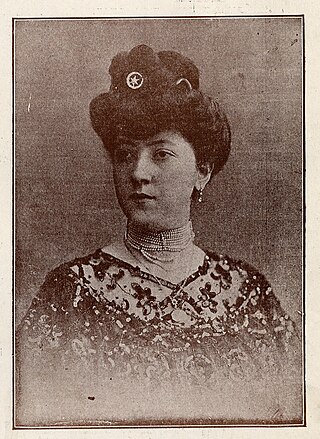
Regina Zuckerberg was an Austrian-born Yiddish theatre actor and Prima donna who had a career both in Europe and the United States.
















